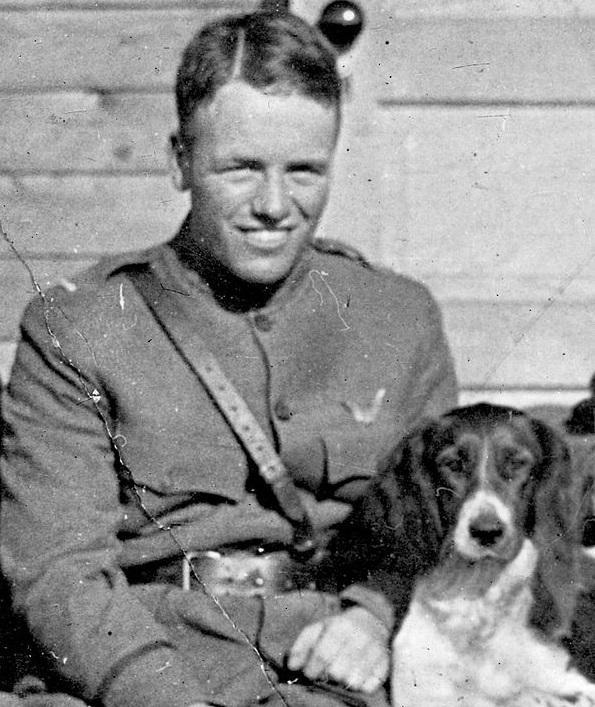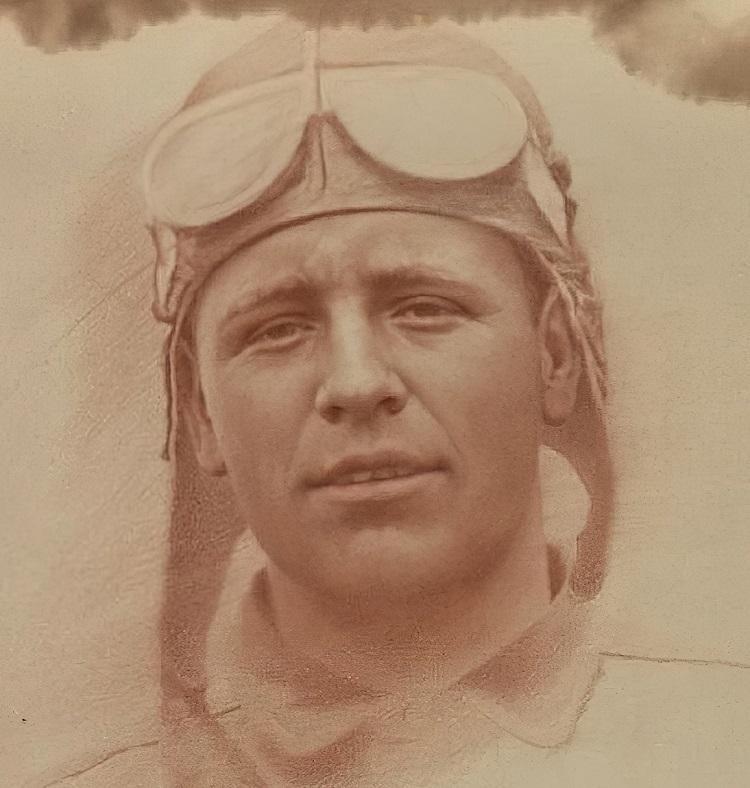“He is not dead, he doth not sleep—
He hath awakened from the dream of life—
‘Tis we, who lost in stormy visions, keep
With phantoms an unprofitable strife,
And in mad trance, strike with our spirit’s knife
Invulnerable nothings.—We decay
Like corpses in a charnel; fear and grief
Convulse us and consume us day by day,
And cold hopes swarm like worms within our living clay.”
– 39th stanza from “Adonais: An Elegy on the Death of John Keats, Author of Endymion, Hyperion, etc.” This is a pastoral elegy written by Percy Bysshe Shelley for John Keats in 1821 [removed, “Peace, peace!” from the first line]
Quentin Roosevelt was born into a life of privilege, with a father who was the President of the United States. He lived in the White House during his childhood and was known for his mischievous behavior and humor. Despite his playful nature, Quentin was an excellent student, and after attending various schools, he was admitted to Harvard University in 1915. However, with the outbreak of World War I, he dropped out of college in May 1917 to join the newly formed 1st Reserve Aero Squadron.
Quentin trained on Long Island at an airfield later renamed Roosevelt Field in his honor, eventually becoming a pilot in the 95th Aero Squadron, part of the 1st Pursuit Group. He had one confirmed kill of a German aircraft, which he shot down on July 10, 1918. However, just four days later, on July 14, 1918, Bastille Day, Quentin was shot down in aerial combat over Chamery, a hamlet of Coulonges-en-Tardenois, France. His plane crashed so close to the German lines that they buried him with full battlefield honors.
For propaganda purposes, the Germans made a postcard of the dead pilot and his plane, which was met with shock in Germany, where Theodore Roosevelt was still held in high respect. Quentin’s death was a significant loss for the Roosevelt family and the country, as he is the only child of a U.S. president to have died in combat. He was posthumously awarded the Croix de Guerre with Palm and the Purple Heart. His brother Kermit edited and published Quentin Roosevelt: A Sketch with Letters, consisting of Quentin’s letters from France as well as tributes to Quentin written after his death.
Quentin’s popularity extended beyond his family, as he was seen as a symbol of American bravery and patriotism during a time of war. His death was widely covered in the press, and his grave became a place of pilgrimage for American soldiers during World War I. The French posthumously awarded Quentin a Croix de Guerre with Palm, and a small shrine was built around Quentin’s original grave, which became a popular pilgrimage site. In addition, the memorials at the crash site and in the nearby village of Sancy-les-Cheminots are regularly tended and visited today.
The Germans also honored Quentin, as they quickly learned his identity and announced his death first in their press. A photograph showing Quentin’s corpse lying beside his Nieuport 28 was printed on postcards, which went viral in Germany in a 1918 way, and today the image is easily found on the internet.
In 1955, Quentin’s remains were exhumed and moved to the ABMC cemetery at Colville-sur-Mer, where he lies beside his brother Ted, who died in WW2. Quentin has been honored in various ways, including the naming of streets and monuments in his honor. His bravery and sacrifice continue to be remembered as a symbol of the courage and patriotism of the American people.
Quentin Roosevelt was not just a hero in death; he was a hero in life as well. He had a charming personality and a great sense of humor, which made him popular among his peers. His father nicknamed him “Quinikins,” and his mother called him a “fine bad little boy.” Quentin’s mischievous behavior continued throughout his life, and he was known for his reckless disregard for his own safety.

Lt. Quentin Roosevelt, the youngest son of President Theodore Roosevelt, a pilot in the 95th Aero Squadron, Air Service, United States Army. On July 14, 1918, he died after being shot down behind German lines. Date: between circa 1917 and circa 1918
In 1919, Harvard University granted Quentin Roosevelt a posthumous degree, which he would have received had he lived to graduate with his class. The degree was awarded in recognition of Roosevelt’s patriotism, courage, and selfless service to his country.
In 1921, a monument was erected at the site of Roosevelt’s crash in Chamery, France, in honor of his service and sacrifice. The monument consists of a bronze plaque mounted on a stone pedestal, with the inscription “In memory of Quentin Roosevelt, Second Lieutenant, First Aero Squadron, American Expeditionary Forces, Killed in Action, July 14, 1918.” The plaque also includes a relief of Roosevelt’s plane and an inscription in French.
In the years following his death, Roosevelt’s family and friends published several books about him, including “Quentin Roosevelt: A Sketch with Letters,” which included his letters from France as well as tributes to Quentin written after his death. The book was edited by Roosevelt’s brother Kermit, who served in the war as well.
Despite his carefree nature, Quentin was a skilled aviator and a courageous fighter. He willingly risked his life in the service of his country and ultimately gave his life for it. His death was a great loss to his family, but his memory lives on as a symbol of the bravery and sacrifice of all those who have fought for their country. The story of Quentin Roosevelt is a poignant reminder of the tremendous sacrifices made by the men and women who have served their country throughout history. His courage, determination, and patriotism continue to inspire new generations of Americans to uphold the values of freedom, justice, and democracy. The legacy of Quentin Roosevelt is a testament to the enduring spirit of the American people and a reminder of the profound debt we owe to those who have fought to defend our nation and its ideals. As we honor the memory of this remarkable young man, we also pay tribute to all those who have served and continue to serve in the United States Armed Forces, who sacrifice so much to keep our country safe and free.
Quentin Roosevelt’s life and death had a significant impact on his family and the nation. He was a young man who showed great courage and bravery in the face of danger, and he made the ultimate sacrifice for his country. His death was felt deeply by his family and the nation as a whole, and he continues to be remembered as a symbol of the courage and patriotism of the American people.
References:
- https://en.wikipedia.org/wiki/Adonais
- https://airandspace.si.edu/stories/editorial/grave-quentin-roosevelt
- https://www.nps.gov/people/quentin-roosevelt.htm
- https://www.kumc.edu/school-of-medicine/academics/departments/history-and-philosophy-of-medicine/archives/wwi/essays/biography/quentin-roosevelt.html
- https://en.wikipedia.org/wiki/Quentin_Roosevelt
- https://commons.wikimedia.org/wiki/File:Lt._Quentin_Roosevelt,_95th_Aero_Squadron.jpg










